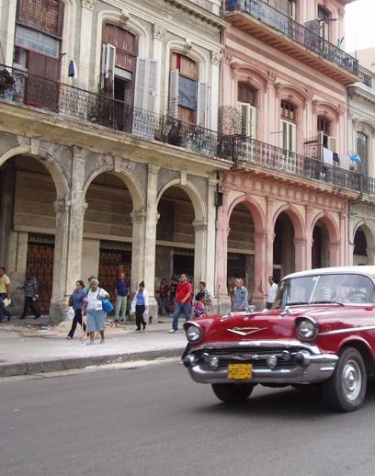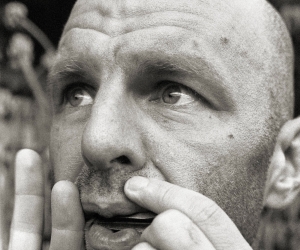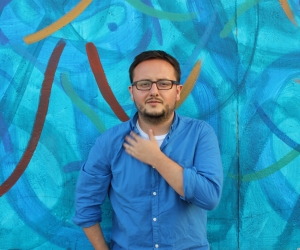
What does a city sound like whose history spans periods of colonial opulence, Mafia casino decadence, and a dying communist revolution? The habanera, the salsa, and reggaeton. Havana’s storied past has produced a musical culture as varied and deep as the sociopolitical eras that it has survived. During the nineteenth century Havana gave birth to a musical form—the habanera, a nostalgic song in waltz time. It was particularly popular among Catalonian sailors sent to guard the ports of Spain’s Caribbean colonies and in consequence it was the first dance music from Cuba to be exported all over the world, contributing to the origins of tango. Salsa—habanera’s more recent offspring—emerged in the ’60s, and was followed more recently by Havana’s version of Reggaeton in the ’90s.
Havana in 2011 is a sound-full city of chaos and order on a fragile island governed by an aging regime. It is a perpetual habanera replete with nostalgia and languor, where rumba and son are heard in the streets, and a nightly cannon-firing ceremony, called the Cañonazo, orders the city to silence at nine o’clock with a thunderous boom. Nobody obeys, as you will hear if you walk the neighbourhoods and listen.
Streets, people, birds, taxi
Havana Centro is the heart of the city and lies blocks away from the renovated historic Havana Vieja. Streets called Perseverencia, Virtudes, and Animas are filled with people from morning until long after dark, teeming with calls, whistles, murmurs, and a constant human babble. A child’s crying sings a scrap of daily drama. Cocks crow from unseen roosts right downtown; song birds flit from rooftops, terraces, and in and out of abandoned, half-ruined colonial buildings. From open windows the sounds of television and radio broadcasts criss-cross through the air. Rattling American cars from the ’50s rumble by, along with scooters, bike taxis, and hand-pushed carts piled with tropical fruit. A vendor chants the names of his goods. There is no quiet here, though the volume diminishes late on a hot night, when people sit on the sidewalk playing cards—chips rattling, hand-slap on the table, a winner’s cry, a transistor radio announcing baseball play-by-play.
In a taxi ride to the Vedado neighbourhood, the groaning Lada motor dies in an attempt to climb a hill. Worn tires whine a solo on the asphalt as it rolls backwards to a halt. The driver sighs and pries the trunk open like a tin can. Gas trickles into a reservoir under the back seat, transforming the taxi into a unique, sonorous metal vessel. Then it explodes back to life in a fuming black cloud and guns up the hill.
Brass duet, trees, and traffic
On the steps of a government building next to six lanes of nonstop traffic, a French-horn player practices scales. Immobile, he appears oblivious to anything other than the rigours of flats and sharps. Across four lanes of traffic on the Avenida de la Independencia, a tenor saxophonist improvises, leaning against a tree. It is an unlikely duet. A sultry Caribbean breeze rattles the leaves in the trees, making it all sound legato and intriguingly orchestrated. Then the lights turn red and traffic slows to a stop, diminishing the background hum of vehicles and creating a brief crescendo.
Ice cubes, vendors, parade
In an open-air café a cold drink is placed on a table. A man sings a bolero somewhere distant on Obispo Street. Ice cubes tinkle in the glass as the paper sleeve is torn from the straw. “Granma! Granma!” a vendor calls, hawking the communist party daily newspaper. Disputing voices advance and ebb nearby from the horde of men who gather each day in Parque Central to argue about baseball. When the plastic straw stirs the ice cubes there is more glass clinking and then a suspended moment with nothing. A parade of Afro-Cuban drummers approaches from a side street, led by two trumpeters and followed by a dancing crowd. They sweep by the café in a sudden burst of fanfare, turn the corner, and flow into the next street.
Seawater, lamppost, and gulls
El Malecón is the famous sea-front esplanade built during American occupation in the early 1900s. It is an eight-kilometre walkway sandwiched between the Florida Straits whose water claps the rocks, and the stream of cars, scooters, coco-taxis, and Chinese buses motoring along the Avenida de Maceo. Gulls caw from the rocks. Lovers huddle on the seawall and hustlers cruise by, searching for tourists.
High on a steel lamppost a small, round, metal object, dangling by a wire, taps the post. Two high notes in the air tinkle delicately like tiny bells, then once again. The sound catches in sea breeze and carries far beyond the lamppost.
Cannons, silencio, party
The Cañonazo is a nightly nine o’clock ceremony in which three cannon shots are fired from the Forteleza de San Carlos in a re-enactment of a colonial-period military tradition that signalled the closing of the city gates. The same historic fort served as headquarters, prison, and execution grounds for Che Guevera and Cuba’s revolutionaries when they took the city in 1959. Locals and tourists mill in crowds, waiting on the lawn near drink and food concessions. They gather when a parade of torch-bearing soldiers dressed in eighteenth-century costumes march to the cannons aimed at Havana, 275 metres away, across the narrow bay. Their boot heels strike the stone path in unison, then halt with a stomp. A soldier with a torch stands at attention, turns from the crowd to the city, and calls, “S-I-L-E-N-C-I-O!” The first cannon explodes after a brief pause. “S-I-L-E-N-C-I-O!” The ritual is repeated twice more. Ignoring the call for silence, the gathered crowd erupts in applause as the soldiers march back to their barracks. Below the fortress, on the edge of Havana Bay, several tiny boats bob quietly in the eddy, hushed for the night, while in Havana the party continues long into the morning hours.
Image: The streets of Havana, Cuba. Image by: Glidemax (CC-BY-SA-3.0-de via Wikimedia Commons).


